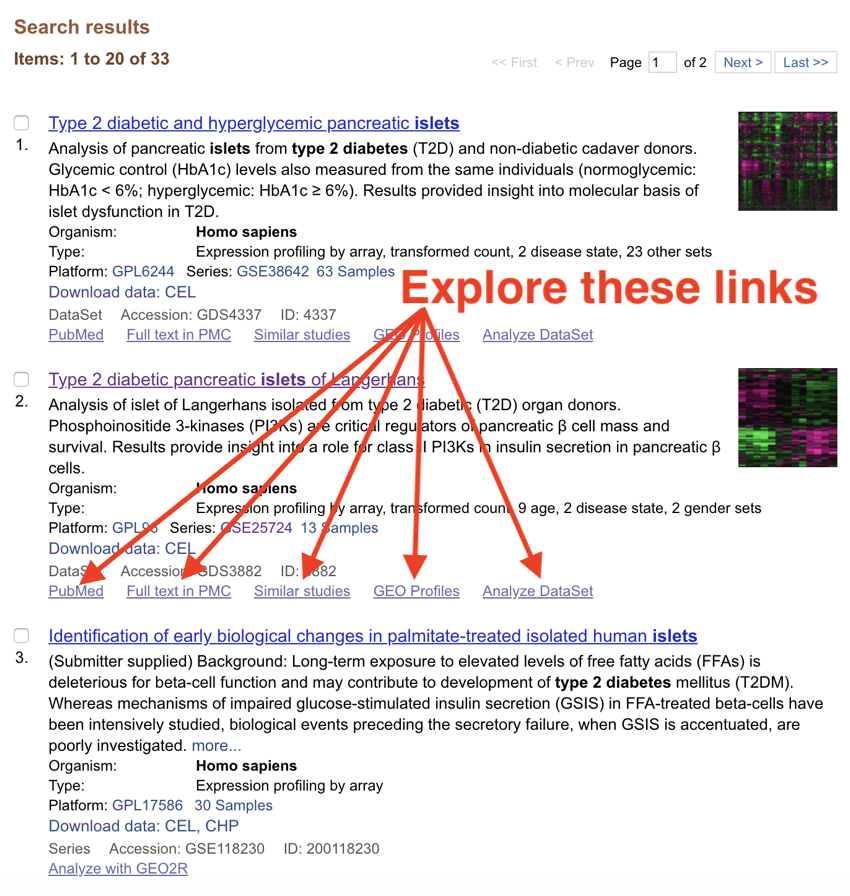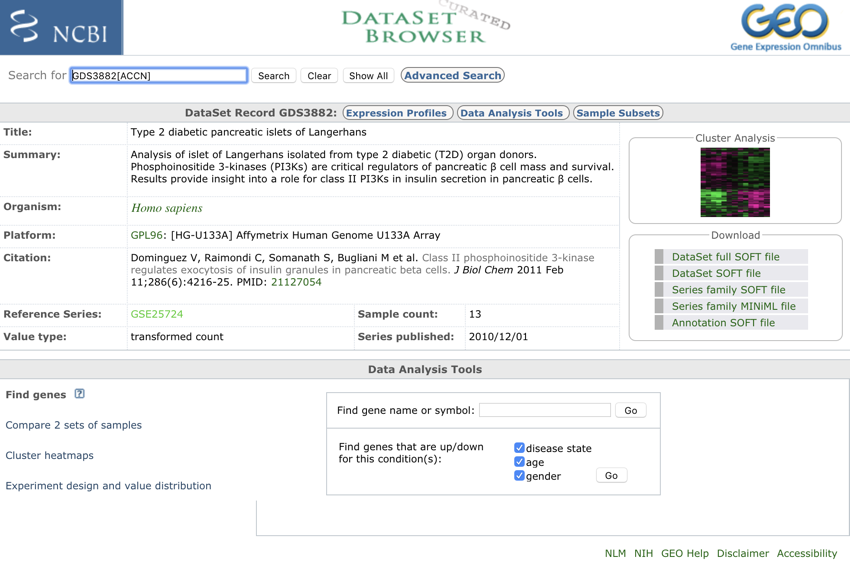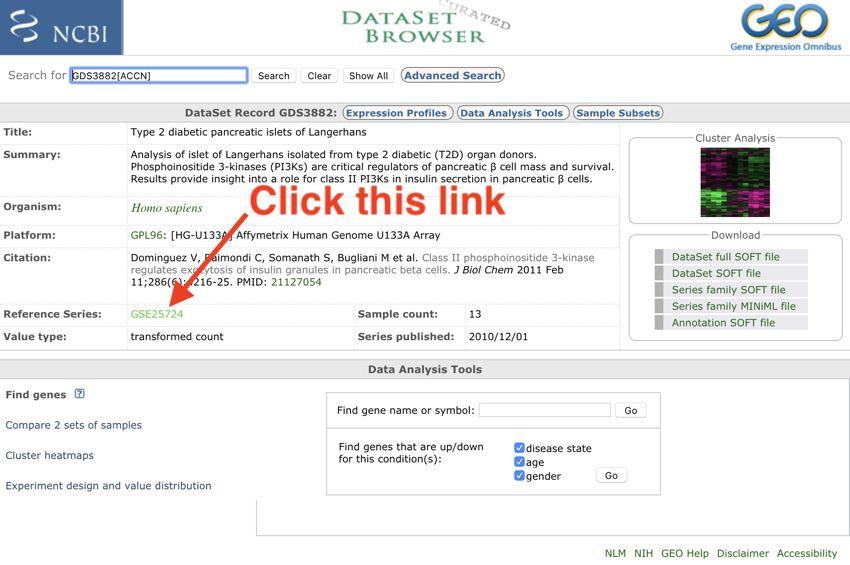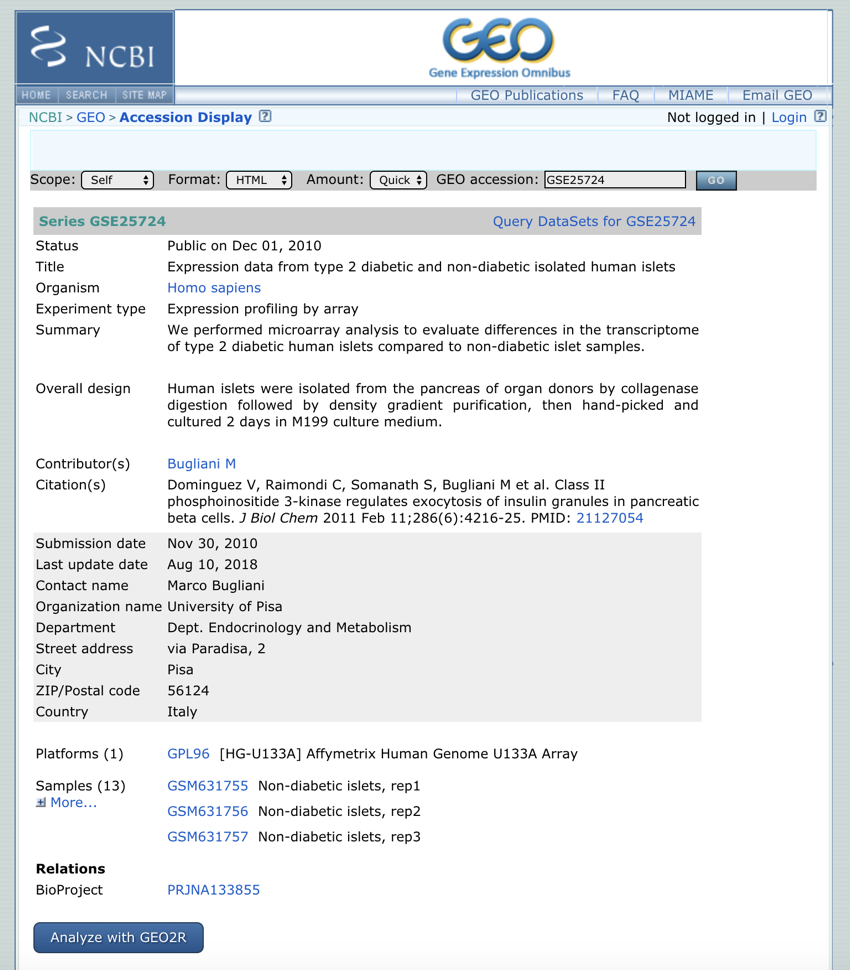Reading the GEO Entry
in the last section, we looked at how to search the
GEO
dataset for gene expression data associated pancreatic islets from humans with type II diabetes.
From the 'advanced search', we produced a list of possible datasets. We will now look at those datasets in a bit more detail.
We are now about to fall down the rabbit hole...
We will now look at one of the
GEO
database entries. For this, we will use, what should be (hopefully), the second entry in your returned list of results (the reasons for looking at this entry is because we will be using the data in some later analysis). If you have closed the advanced search window, the entry can be found here -
GDS3882
.
- Take some time to explore the links associated with the returned result. Of particular interest will be the PubMed
 link, and the link that takes you to related datasets.
link, and the link that takes you to related datasets.

Take some time to look at the links - Monday November 12, 2018 at 5:26:10 pm
Notice how the data is interconnected across numerous databases.
- Click on the 'Type 2 diabetic pancreatic islets of Langerhans' (i.e. the title) link to view the database entry.
- Take some time to check the information.

The full database record - Monday November 12, 2018 at 5:28:28 pm
Using the information for the database entry, please take the following quiz:
It is possible to find out some further information about the dataset. This can be found out by either looking at the paper associated with the entry or by looking at the
GEO
Accession Display.
- Click on the GSE25724 link.

Click on the GSE25724
If you have successfully clicked on the GSE25724 link you should now be looking at a screen like this:

The GEO Accession entry - Monday November 12, 2018 at 5:33:48 pm
Using the information for the accession entry, please take the following quiz:
In this section, we have looked at how to explore the entry for a dataset in the
GEO
system. Specifically, we have looked at how to:
- check that the dataset is appropriate for further analysis to tackle the question
- find papers associated with the dataset
- identify related datasets
- find the correct full reference to the paper describing the work
- find the correct identifier for the dataset in GEO

- locate the unique reference series identifier for the data, i.e. GSE25724
In the next section we are going to start doing some analysis of the dataset associated with
GDS3882
, and for this, you will need the reference series identifier for the data - GSE25724.



